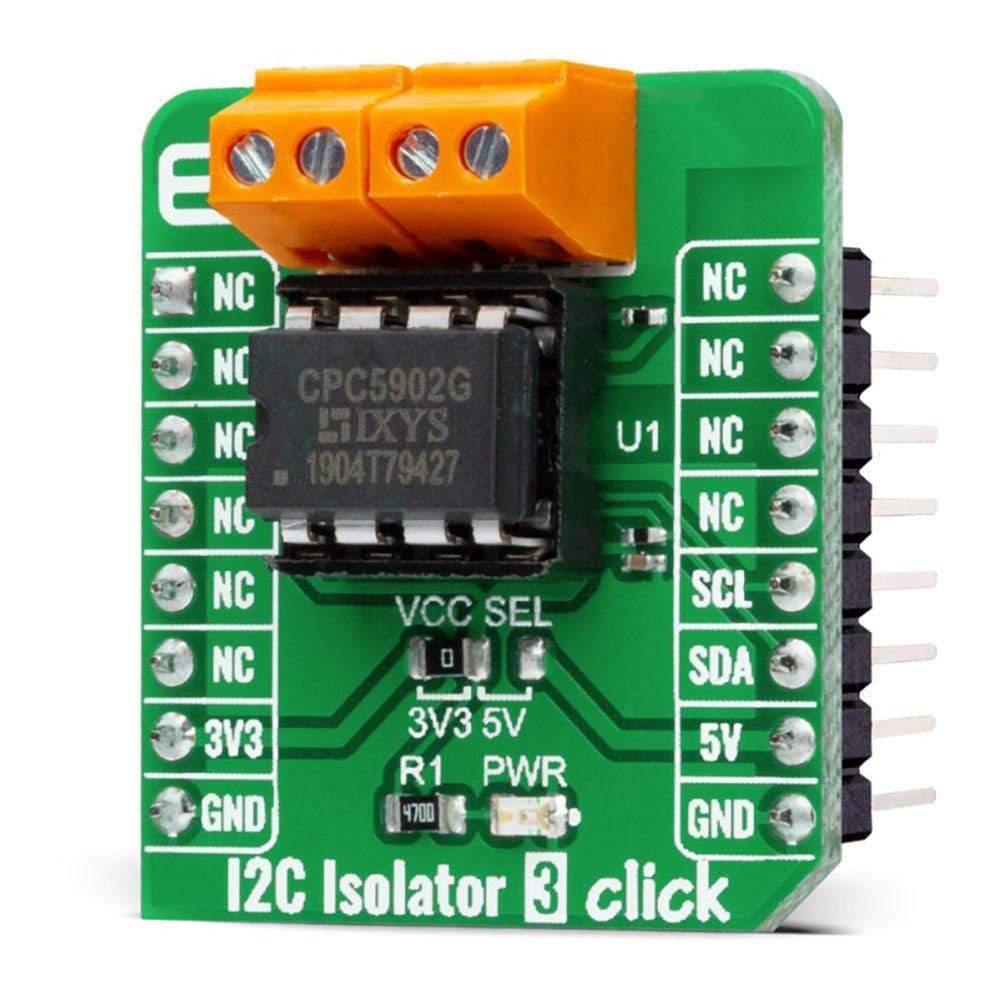
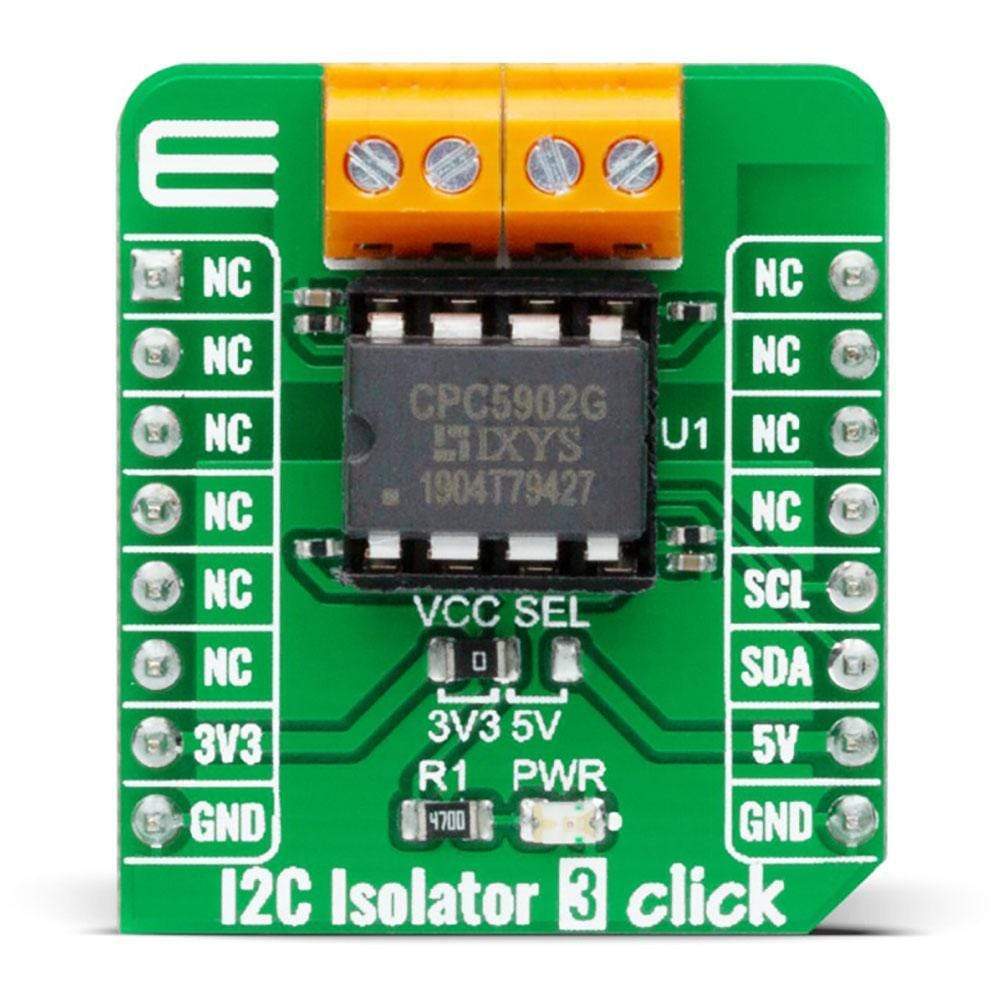

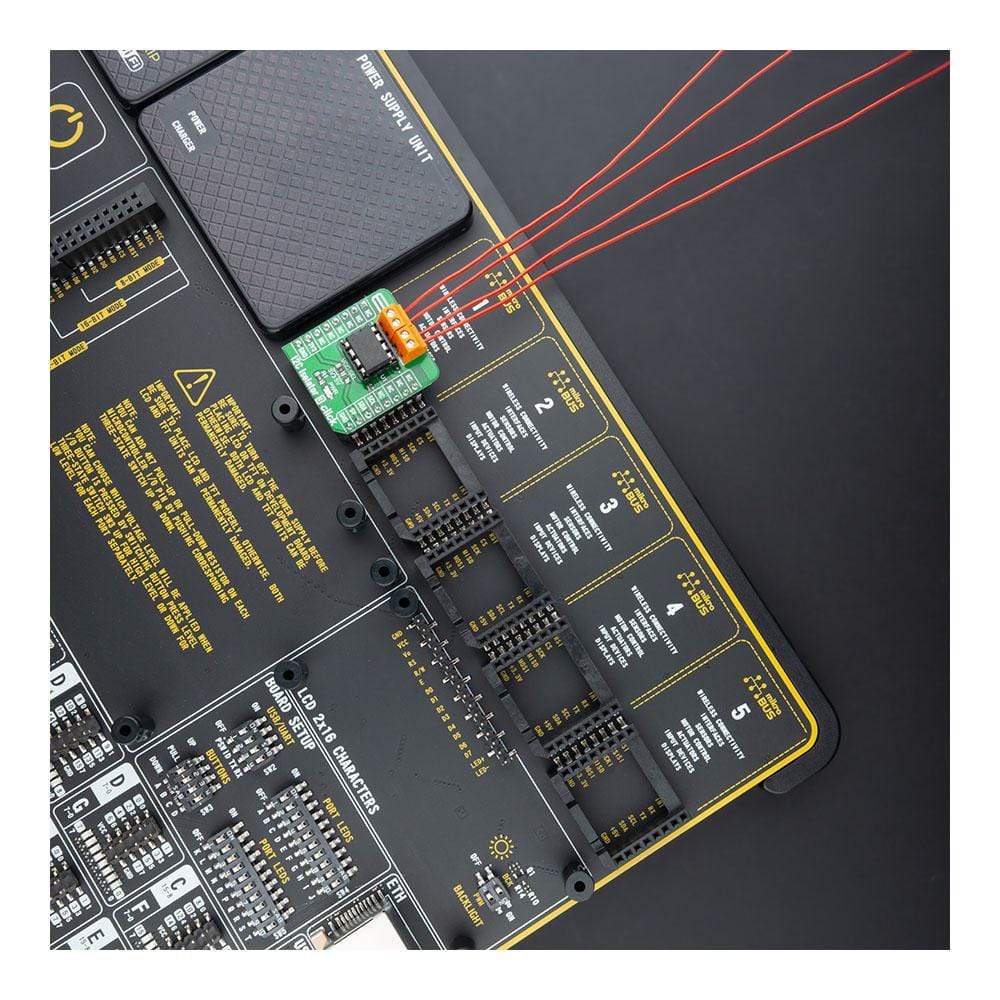
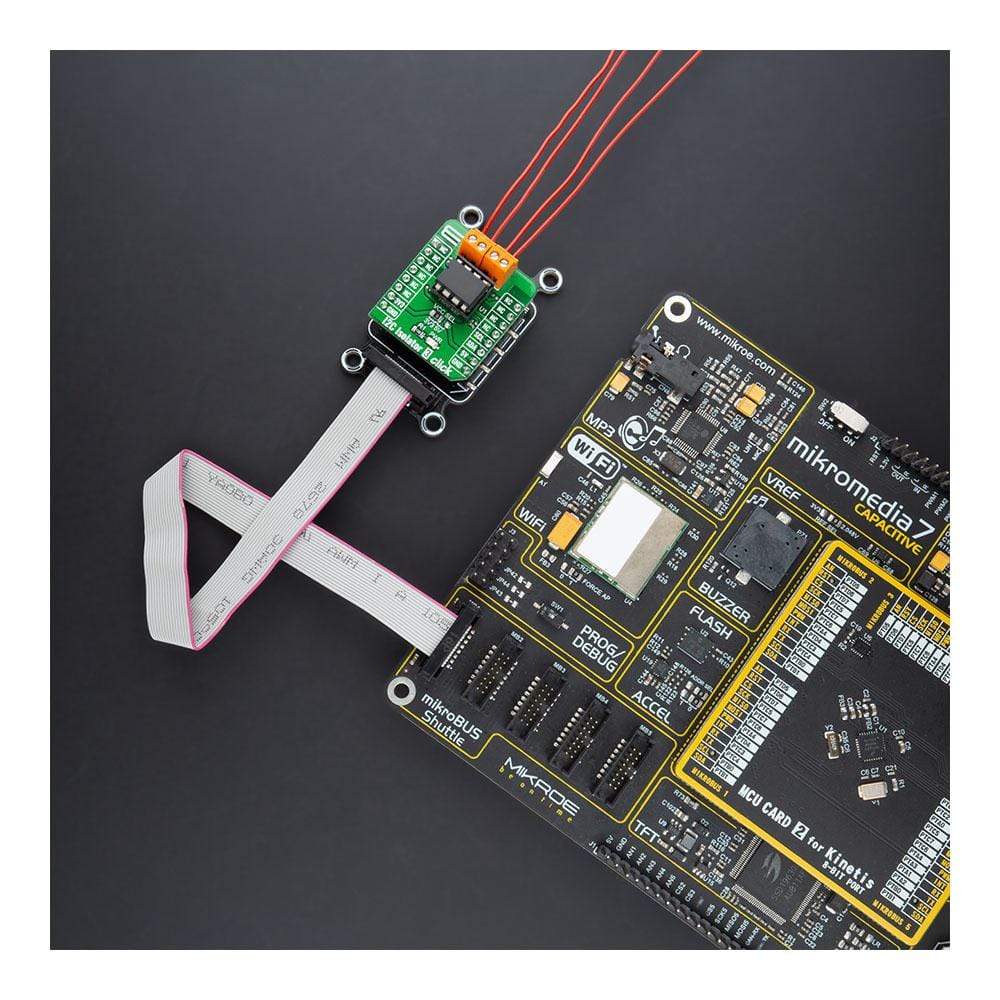
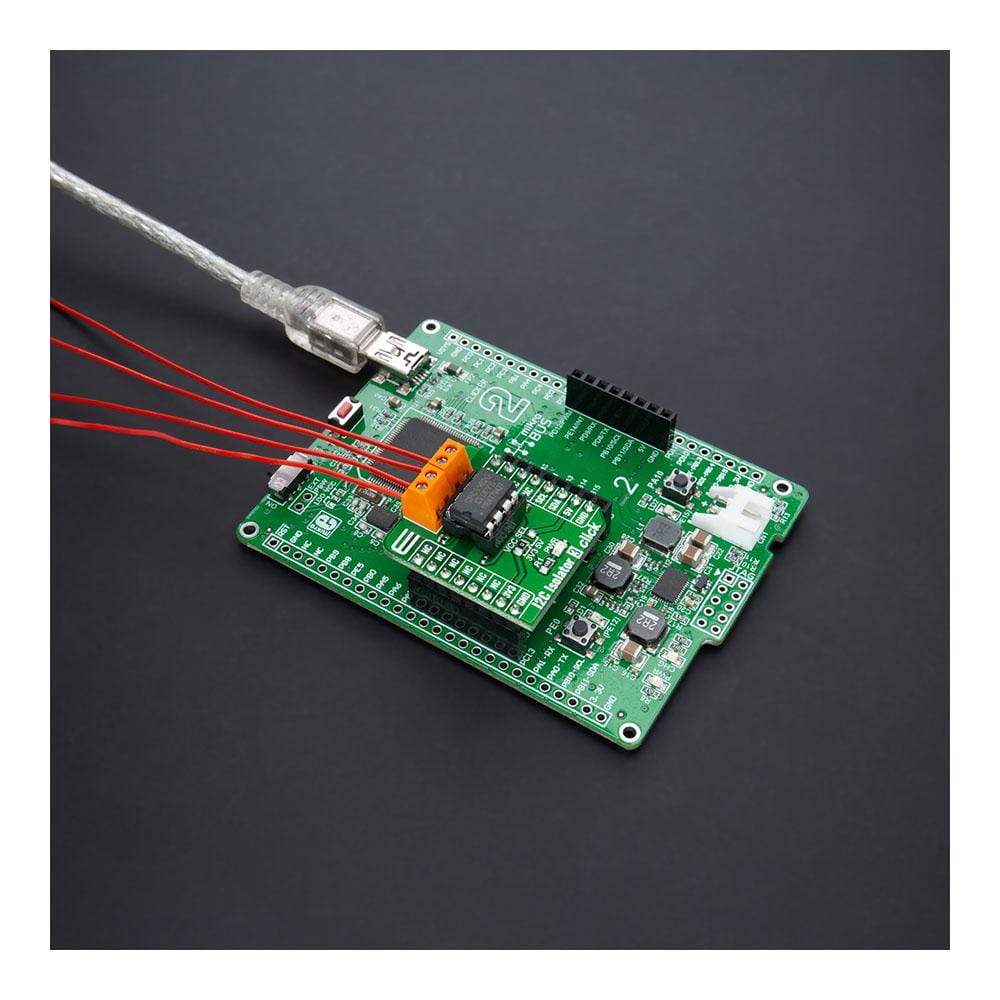
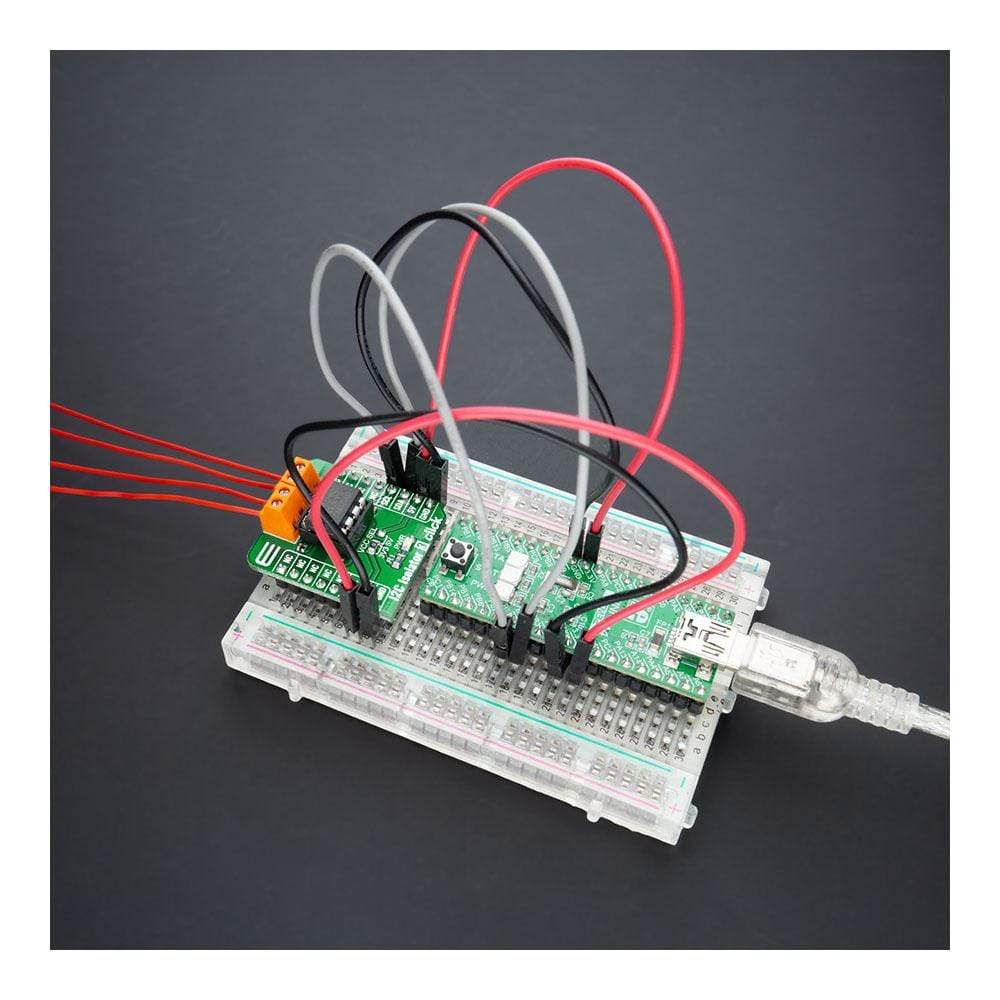
Overview
The I2C Isolator 3 Click Board™ is a compact add-on board that offers completely isolated bidirectional communication. This board features the CPC5902, a dual optically isolated bidirectional logic-bus repeater from IXYS Integrated Circuits Division. The CPC5902 pass DC signals and don’t need to be clocked periodically to sustain the logic states. It supports I2C clock stretching while providing 3750Vrms of galvanic isolation. When different supply voltages are applied on both power sides of the CPC5902, it can also function as a logic level translator for levels as low as 2.7V or as high as 5.5V. This Click Board™ is ideal for Power-over-Ethernet applications, providing buffering and isolation of the clock and data signals between MCU and the Power Supply Equipment (PSE) controller, and also suitable as an I2C bus length extender and logic-level translator.
The I2C Isolator 3 Click Board™ is supported by a mikroSDK compliant library, which includes functions that simplify software development. This Click Board™ comes as a fully tested product, ready to be used on a system equipped with the mikroBUS™ socket.
Downloads
La carte Click Board™ I2C Isolator 3 est une carte complémentaire compacte qui offre une communication bidirectionnelle complètement isolée. Cette carte est équipée du CPC5902, un répéteur de bus logique bidirectionnel à double isolation optique de la division des circuits intégrés d'IXYS. Le CPC5902 transmet les signaux CC et n'a pas besoin d'être cadencé périodiquement pour maintenir les états logiques. Il prend en charge l'étirement de l'horloge I2C tout en fournissant 3750 Vrms d'isolation galvanique. Lorsque différentes tensions d'alimentation sont appliquées des deux côtés de l'alimentation du CPC5902, il peut également fonctionner comme un traducteur de niveau logique pour des niveaux aussi bas que 2,7 V ou aussi élevés que 5,5 V. Cette carte Click Board™ est idéale pour les applications Power-over-Ethernet, fournissant une mise en mémoire tampon et une isolation des signaux d'horloge et de données entre le MCU et le contrôleur d'équipement d'alimentation (PSE), et convient également comme prolongateur de longueur de bus I2C et traducteur de niveau logique.
Le Click Board™ I2C Isolator 3 est pris en charge par une bibliothèque compatible mikroSDK, qui comprend des fonctions qui simplifient le développement logiciel. Ce Click Board™ est un produit entièrement testé, prêt à être utilisé sur un système équipé du socket mikroBUS™.
| General Information | |
|---|---|
Part Number (SKU) |
MIKROE-4467
|
Manufacturer |
|
| Physical and Mechanical | |
Weight |
0.018 kg
|
| Other | |
Country of Origin |
|
HS Code Customs Tariff code
|
|
EAN |
8606027381621
|
Warranty |
|
Frequently Asked Questions
Have a Question?
Be the first to ask a question about this.







